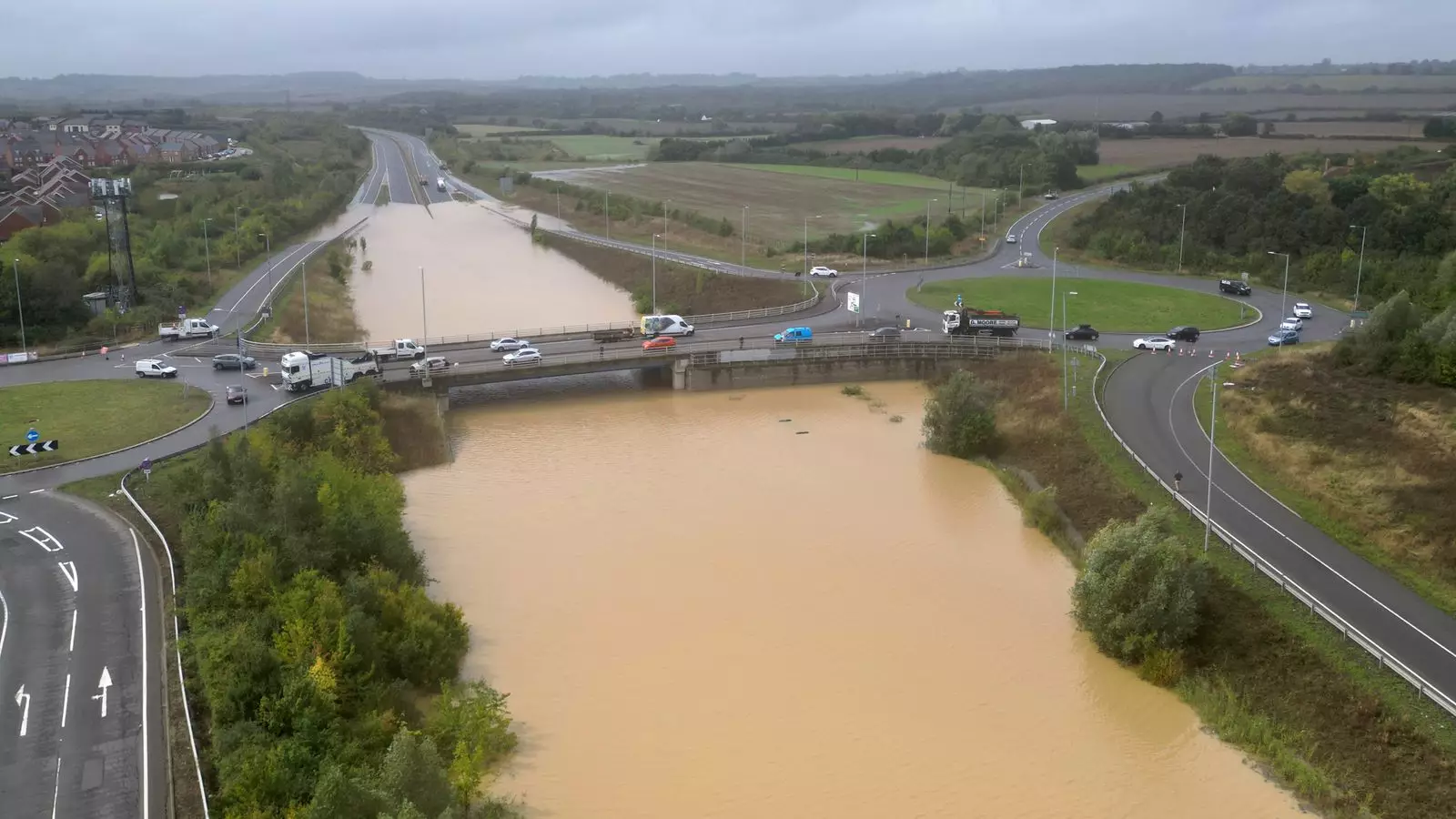Commuters across the UK are grappling with significant travel challenges as an onslaught of severe weather brings road closures and disrupted rail services. Following a relentless deluge, many areas have reported receiving an extraordinary amount of rain—more than a month’s worth—within just the last day. The impact of this rainfall has been destructive, with rising water levels damaging homes and rendering roads unusable. As the situation escalates, meteorological authorities are issuing warnings, predicting further storms accompanied by heavy rain and gusty winds, posing an ongoing threat of flooding and making travel treacherous.
The Met Office has indicated that the potential for heavy, persistent rainfall will affect different regions, particularly northern England and the north Midlands. A yellow weather warning is set to disrupt normalcy across much of the area as the upcoming storms are anticipated to produce rainfall ranging from 80 mm to 100 mm in regions like the Pennines and North York Moors. Additionally, strong winds may exacerbate conditions, particularly for coastal communities and those in elevated areas. The widespread alerts highlight a serious ongoing weather pattern that demands immediate attention from residents, commuters, and local authorities alike.
The Environment Agency has taken action by issuing flood warnings for numerous regions, emphasizing the urgency of the situation. Notable areas experiencing heightened alerts include parts of Bedfordshire, Buckinghamshire, Northamptonshire, Kent, and Somerset. The flood warnings—which are the second highest tier of alert—reflect the seriousness of conditions across these diverse regions. Specific waterways are particularly affected, including the River Sheppey in Somerset and the River Medway in Kent, among others.
Moreover, the consequences of this torrential rain have left some communities assessing the damage and barriers posed by increased river levels. After experiencing significant rainfall—over 100 mm within 48 hours in parts of Bedfordshire alone—these regions are becoming increasingly aware of the threat that flood waters pose to infrastructure, safety, and daily life. Notably, the area around Woburn in Bedfordshire recorded a staggering 142.8 mm of rain, far surpassing the average rainfall for the month of September. This dramatic upsurge raises critical questions about climate preparedness and infrastructure resilience in the face of such weather extremes.
The ramifications of flooding are severely impacting transport routes. Major thoroughfares like the A421 and A5 are witnessing closures that complicate daily commuting, further exacerbating travel time and frustration for individuals relying on these pathways for work. According to National Highways, ongoing flood conditions have led to the closure of significant access routes, bringing commuting to a virtual standstill in some areas.
Rail travel, too, has been adversely affected, with services ground to a halt due to flooding incidents. Reports highlight disruptions on lines operated by Avanti West Coast and London Northwestern Railway, marking a disruption in connectivity for commuters traveling between key hubs. Additionally, bus services are being utilized as replacements for regular rail transport due to flooding, indicating that communities are struggling to maintain essential links amidst chaotic weather conditions.
As flooding continues to disrupt lives, authorities are assessing the impact on not just infrastructure, but on community well-being as well. It’s vital for local governments and agencies to maintain open communication with the public regarding ongoing weather developments and emergency protocols. In the absence of flood warnings in parts of Scotland and Wales, residents remain vigilant as conditions could shift rapidly.
With forecasts indicating continued disturbances, communities must brace for the challenges ahead. The longer-term implications of such weather events prompt a broader discussion about the need for fortifying infrastructure and improving contingency planning for severe weather events. Enhanced measures for flood mitigation, education on emergency preparedness, and community engagement become paramount in navigating the realities that accompany climate fluctuations in the future.
As the UK endures this turbulent period, it remains crucial for authorities and residents alike to remain informed and prepared to face the elements, ensuring both safety and connectivity are prioritized amidst the chaos of nature’s fury.


Leave a Reply